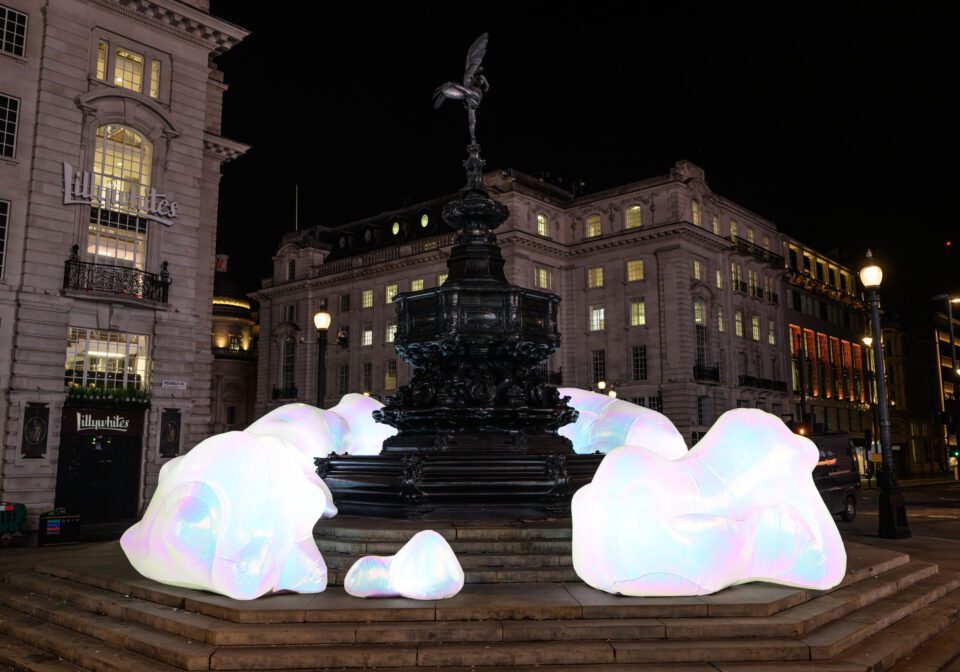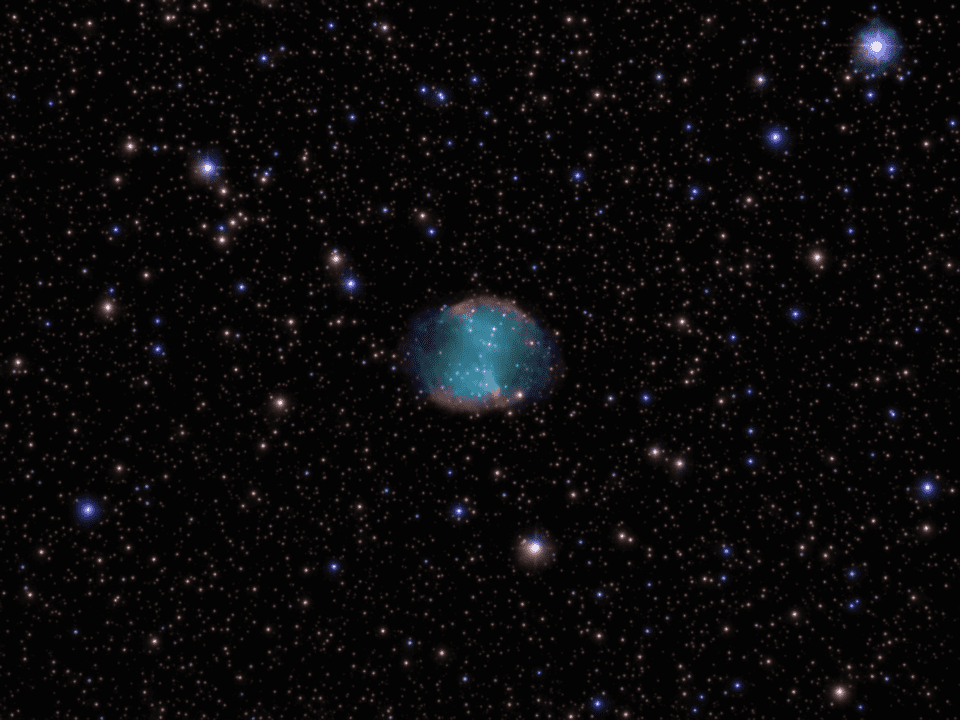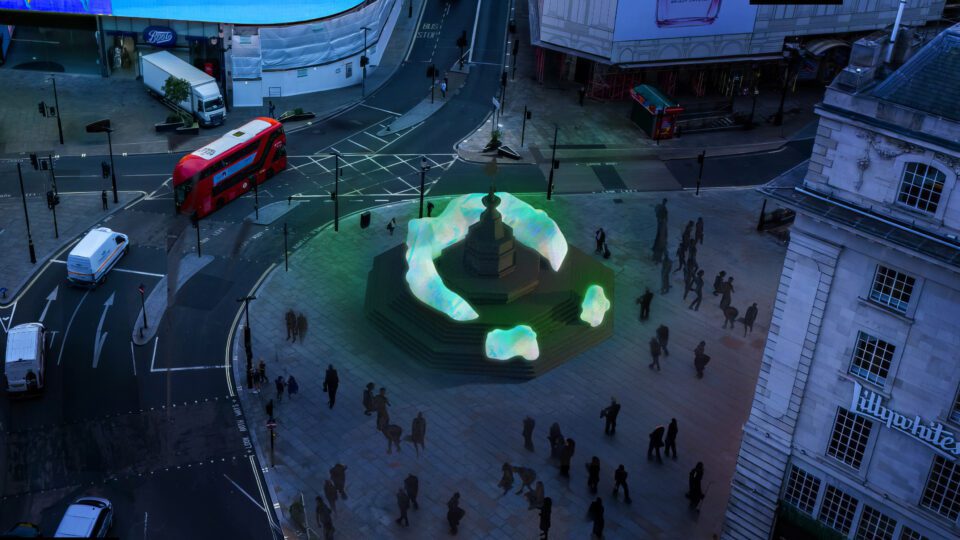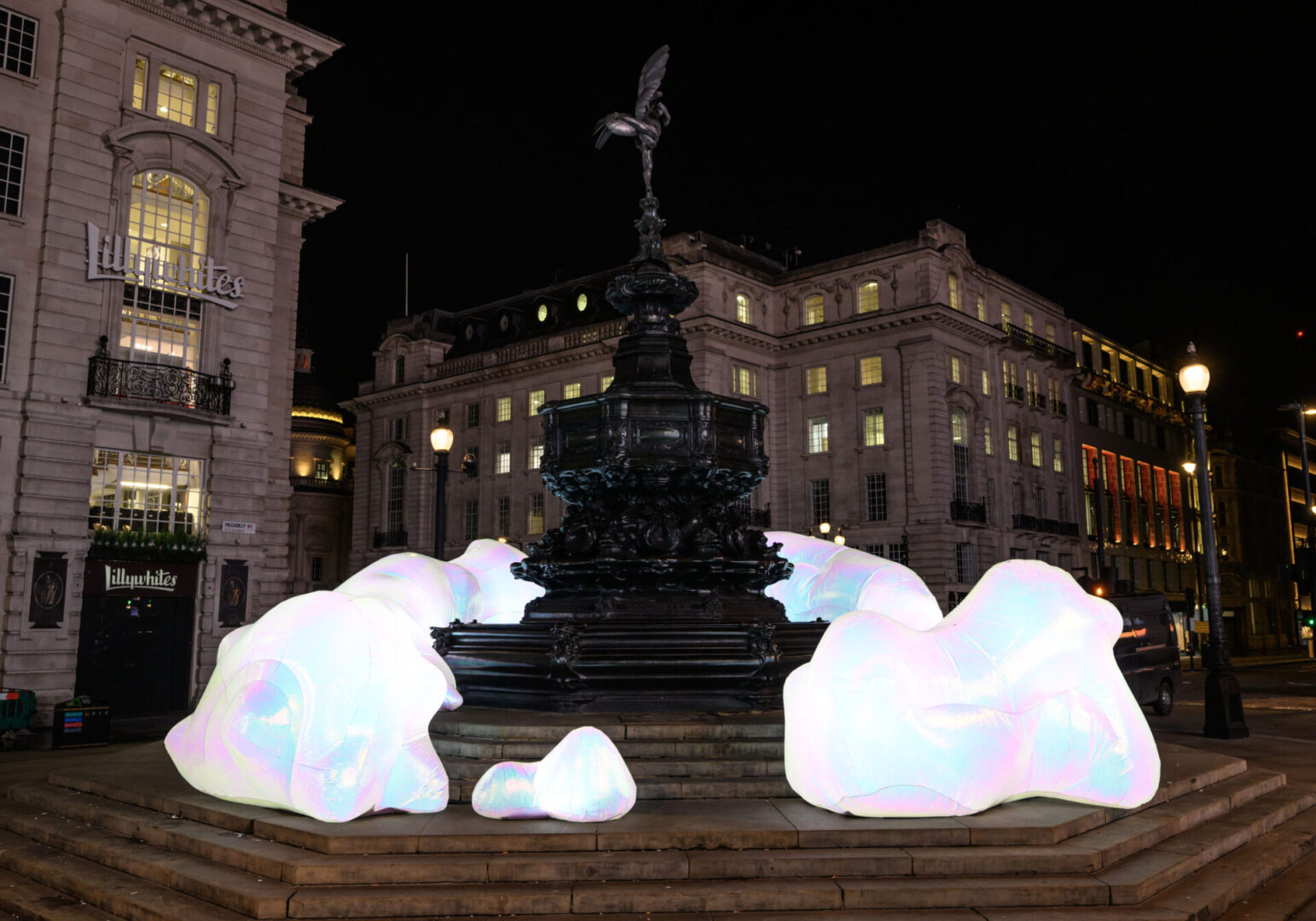The word “springtime” will, for most people, conjure up a certain type of mental image: the first bright blooms of daffodils and tulips, young lambs, chocolate Easter eggs or the first glimpses of warmer weather after the winter chill. But for space enthusiasts, the months of February and March also mean the beginning of “Galaxy Season” – a time of year when the Earth’s position means distant galaxies are at their most visible. Artist and activist Nelly Ben Hayoun-Stépanian brings these astronomical visions to Earth with a cosmic takeover of London’s West End in collaboration with Art of London. Asteroid-sized inflatable moon rocks land in Picadilly Circus, whilst state-of-the-art telescopes allow the public to stargaze and search for extraterrestrial intelligence with professional astronomers. Aesthetica spoke to the artist and designer about this huge undertaking, her long-standing commitment to making art accessible to all and why outer space continues to fascinate us.
A: Your latest work is a radical transformation of London’s West End, blending art and space science. What inspired you to take on this huge project?
NBHS: Art of London has this amazing programme called Art After Dark, in which, galleries and famous institutions like the National Portrait Gallery are open after hours, alongside public artworks and spectacular offerings at the West End’s bars and restaurants. So, in that context, Piccadilly Un:Plugged is an aspect of a wider celebration of the potential of nighttime. We very rarely look up into the sky, especially London’s urban centre, so we tend to forget that we’re part of something much bigger. This event is an opportunity for us to talk about our place in space, and what might be out there.

A: The colours of these installation are wonderfully bright and vibrant, something maybe not so commonly associated with space. Why did you make this design choice?
NBHS: When you think about the cosmos in general, you might think about the black and white imagery that has been shared a lot when it comes to space missions. But a rocket doesn’t have to be neutral colours, it can be fluorescent pink. That’s something that was important to the making of this work. It felt like an opportunity to shift aesthetics and the way people think about these scenarios. We spent a lot of time with Glow Inflatables, which is a company that helped provide materials that would be completely iridescent but also look organic.
A: Space is something that we come back to in art, film and literature time and time again. Meanwhile, the James Webb Telescope thrilled the world with new and detailed images of the distant universe. What do you think it is about looking outwards that keeps people fascinated?
NBHS: In the past few years, space has become, in some strange way, even more inaccessible that it’s ever been before. It has started to be seen as a place for the super wealthy, like Elon Musk or Jeff Bezos, who are looking to expand beyond the atmosphere. I wanted with this project to reclaim another side of it, which is the one of the poets and the artists. We can all look up at the sky and be part of it, in some sense. So, for me, space is the most accessible thing we have. It’s a place for us to activate what I call “radical imagination.” It is the idea that as humans we can dream outside of the scope of reference we’ve made for ourselves. Once we start to think above and beyond the confines of our reality, we can start to imagine more inclusive and accessible futures.

A: You mention how space and imagination should be something we can all tap into, and this public show is part of your career-long commitment to accessibility in the arts. Why is this such an important consideration for you?
NBHS: In every bit of work I do, I’m always trying to come up with a way that artwork can encompass the plurality of views that we as humans have developed. Accessibility is the essence of everything I do. In this installation specifically, we incorporated sound and music as a really important component because it speaks to all of us in so many different ways. Regardless of language, or life experience, you can physically feel the beat. It transcends boundaries.
A: Part of the project will see the heartbeats of your Armenian family travel 768,800km to the moon and back. How did this idea come about and how do your familial ties influence your work?
NBHS: My family arrived in France as immigrants because they escaped the Armenian Genocide. They survived something that you could argue is the most horrifying side of humanity. They went on to organise communities around their traditional crafts, specifically textile design. From there, they were able to build a solid political and economic force that they used to get the Genocide recognised in France and then across many territories in Europe and around the world. My family have really inspired me to acknowledge the past in order to be able to move forward. They taught me that it’s a human instinct to want to create. So, when I was thinking about this installation, sending their heartbeats to the moon felt like a universal message of love and compassion. To me, it’s a very simple idea – a heartbeat is something that all living beings can understand. The message is that love should be at the core of our endeavours as we move into the future.

A: Piccadilly Un:Plugged coincides with International Women’s Day and highlights the contributions of female and non-binary artists in art and science. Can you discuss the importance of amplifying these voices in your work?
NBHS: I’m very active in a lot of queer, trans and non-binary activist groups and I run a tuition free university called the University of the Underground. Everything I do is shaped by a drive for accessibility, equality and access to free knowledge. When this project came about, it was essential for me to make it a collective experience. The artists that I invited to collaborate on this are extremely inspirational and are driving forward change in their day-to-day lives and work. We sadly heard about the passing of one of the artists involved and I’m honoured to know that their courageous work is going to be heard in the centre of London for the next three days and as part of International Women’s Day.
A: What do you have people will take away from viewing the installation?
NBHS: First of all I’d hope that they activate their “radical imagination.” I’d like people to start thinking about the question: “if we are going to travel to other places and planets, how should we travel there and what sort of representations of humanity do we want to take with us?” I would also want people to think about how things could be different and to actually understand that the way things are now, are not how they should be. Perhaps it’d also be nice for those who visit, if they were to start creating music or art, to consider a collaboration with the cosmos. It’s about looking up and realising that we are part of something bigger, which I think is a very humbling experience.

A: What’s next? Are you working on anything we can look forward to?
NBHS: We’ve been working on a new film called Doppelgangers, which will be available for people to watch in June. It’s a feature film about alternative views of what life on the moon could be like, and it’s a collaboration between my doppelgangers and I. We’ll also be doing something to honour the life and work of the artist who worked on Picadilly Un:Plugged, Láwû Makuriye’nt (aka EOBIONT)and sadly passed away. There will be an opportunity to celebrate their incredible contribution to arts and culture.
Picadilly Un:Plugged is on 6-8 March: artoflondon.co.uk
Image credits:
Nelly Ben Hayoun-Stépanian, Piccadilly Un:Plugged. London’s West End, part of Art of London’s Art After Dark public art and culture programme. Thursday March 6, 2025. Image: Doug Peters/PA Media Assignments.
Nelly Ben Hayoun-Stépanian, Piccadilly Un:Plugged. London’s West End, part of Art of London’s Art After Dark public art and culture programme. Thursday March 6, 2025. Image: Doug Peters/PA Media Assignments.
Dumbbell Nebula. Image: UNISTELLAR/Emmanuel Marchal.
Art of London, Art After Dark, Piccadilly Un:Plugged, Render 2.





